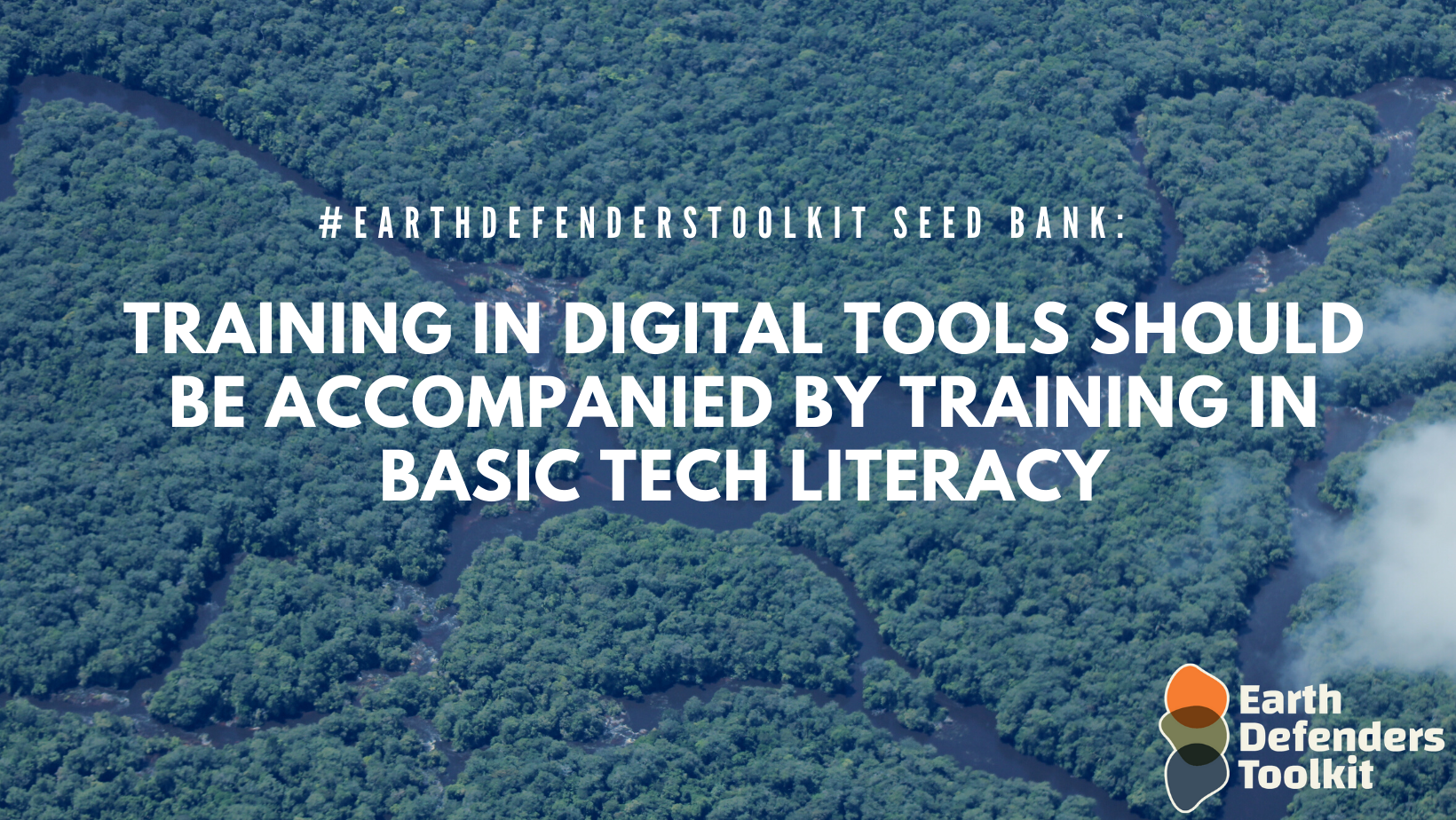As we’ve discussed in a previous EDToolkit Seed Bank post, one of the biggest challenges for earth defender communities seeking to use digital tools is the high learning curve that comes with understanding information technology. There are numerous basic skills and nuances involved in working with information technology or computers, which Western-educated folks take for granted but are quite complex and even overwhelming for somebody who is just starting to work with digital tools. Our partners report that while many community members are eager to learn, and younger people especially can be really fast in figuring out how the technology works, there are also pain points that surface when something doesn’t work right or as expected. A community member might feel comfortable with a particular tool or workflow after following a workshop or training, until something happens that was not covered during the training (like an error message, or seeing an unfamiliar screen by accidentally pressing a button that was not explained during the training, or needing to access something external to the tool being worked with). This may result in community members becoming discouraged from using the tool as a whole.
To remedy this, trainings focused on using a digital tool should be accompanied by training in basic tech literacy focused on components of this broader ecosystem in which the tool lives. One such component is file management, which is relevant to the usage of many different tools and applications and a frequent blocker when a community member is no longer able to locate a file in their device because the file system is unfamiliar to them. There are also many basic nuances in the user interface of file explorer applications like moving files around or deleting them, that are taken for granted by frequent computer users but for some communities, are entirely new skills to learn just as much as the digital tool being introduced for a project.
- One useful thing to do when teaching and learning basic tech literacy is to consider metaphors that help explain abstract computing concepts. For example, with file structure, you could use the example of a tree, with its roots being the root directory, and branches and leaves being subdirectories.
- As discussed on here before, mapping can be an effective way to teach and strengthen information technology skills. Tools that are directly co-created with earth defender communities such as Mapeo can also help build tech literacy because they are specifically designed to be easy to use for those communities, while still introducing some basic computer or smartphone functionality.
Do you have additional thoughts on this? Please let us know what you think by filling out this form.
#EarthDefendersToolkit seed bank is a series of short blog posts where we share knowledge and learnings that have emerged from our research. Would you like to contribute? Please contact us!

